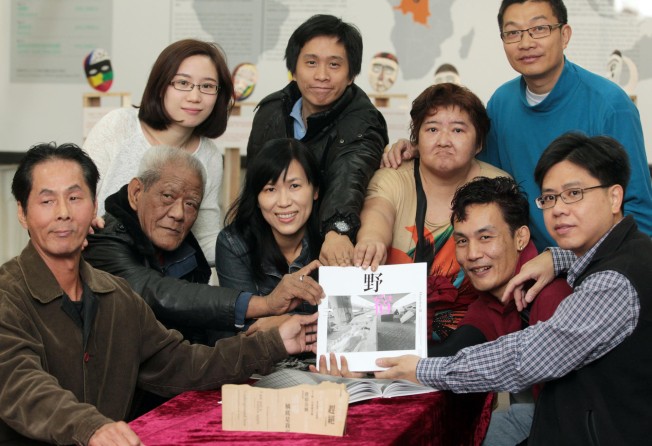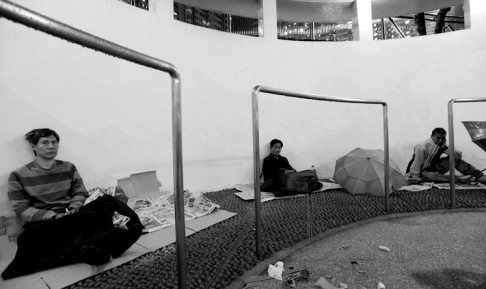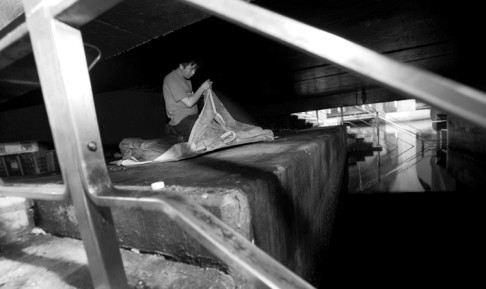
Photographer's documentation of street sleepers shows havoc 'beautifying' projects can bring
Photographer's documentation of street sleepers over 15 years shows what local councils have done in the name of 'beautifying' projects

Two photographs, taken almost a decade apart, starkly illustrate how Hong Kong's homeless have been pushed to the margins in recent years.

The second, from about 2008, shows the same pavilion with a circular hole cut in the roof and rough cobblestones covering the sheltered area.

The homeless have to sleep on the cobblestones if they do not want to get drenched on rainy nights.
Both pictures are the work of veteran news photographer Lei Jih-sheng, who has spent 15 years documenting the lives of Hong Kong's street sleepers.
"Over the years, citizens have been more caring and understanding of the homeless, but the government has been going backwards," said Lei.
He noted that the pictures were typical illustrations of what had been done by local councils in the name of "community beautifying" projects.
Lei said that when he started the project in 1999 with the non-profit Society for Community Organisation, the homeless could sleep freely under overpasses and footbridges, in playgrounds, parks, stadiums and at many other places in Sham Shui Po, Yau Tsim Mong and Wan Chai.
But in about 2007, local councils started spending millions of dollars on projects such as fencing the areas under bridges or paving the ground with cobblestones.
This had forced the homeless out of their zones and into more difficult living environments, such as hellish subdivided units in dilapidated buildings or even public toilets, he said.
Lei said many of the homeless were independent-minded and wanted to earn their own living.
But according to some of those featured in his photographs - to be shown in an exhibition opening at the Cultural Centre in Tsim Sha Tsui on Monday - the shoebox-sized rooms they have been forced into cost most, if not all, of their earnings from odd jobs and they have to apply for the social security.

He earned good money in the 1970s and '80s as a stage designer for television stations and film production companies such as Shaw Brothers. But he was laid off in the 1990s as the local film industry shrank and Hong Kong's economy plummeted and he went to the mainland for new opportunities.
Since the factory he once managed in Guangdong closed in the early 2000s, Ah Kong's life has followed a pattern: working illegally on the mainland, losing his job, coming back, unable to afford a home and moving back to the mainland as a black market worker.
He has been back in the city for almost a year now and this time round has decided to obtain a security guard licence and find a full-time job.
But he is still not sure how he can afford a home.
"I claim social security only when I really need it," he said. "When I had jobs I never applied for it. But now rents are so high, even social security can't cover them."

He now lives in an attic room above a toilet. Costing HK$1,500 a month, the room leaks when it rains and the top caved in a little during a typhoon. He said he sometimes would rather sleep on the streets.
Lei's project has produced three books and the latest, Homeless III, will be sold at the exhibition. He remembers when he presented the first book to former chief executive Donald Tsang Yam-kuen, Tsang was surprised.
"He said he had never heard there were so many homeless people in Hong Kong," Lei said. "I want our policymakers to read this book so they'll start thinking how they can improve their policies on poverty."